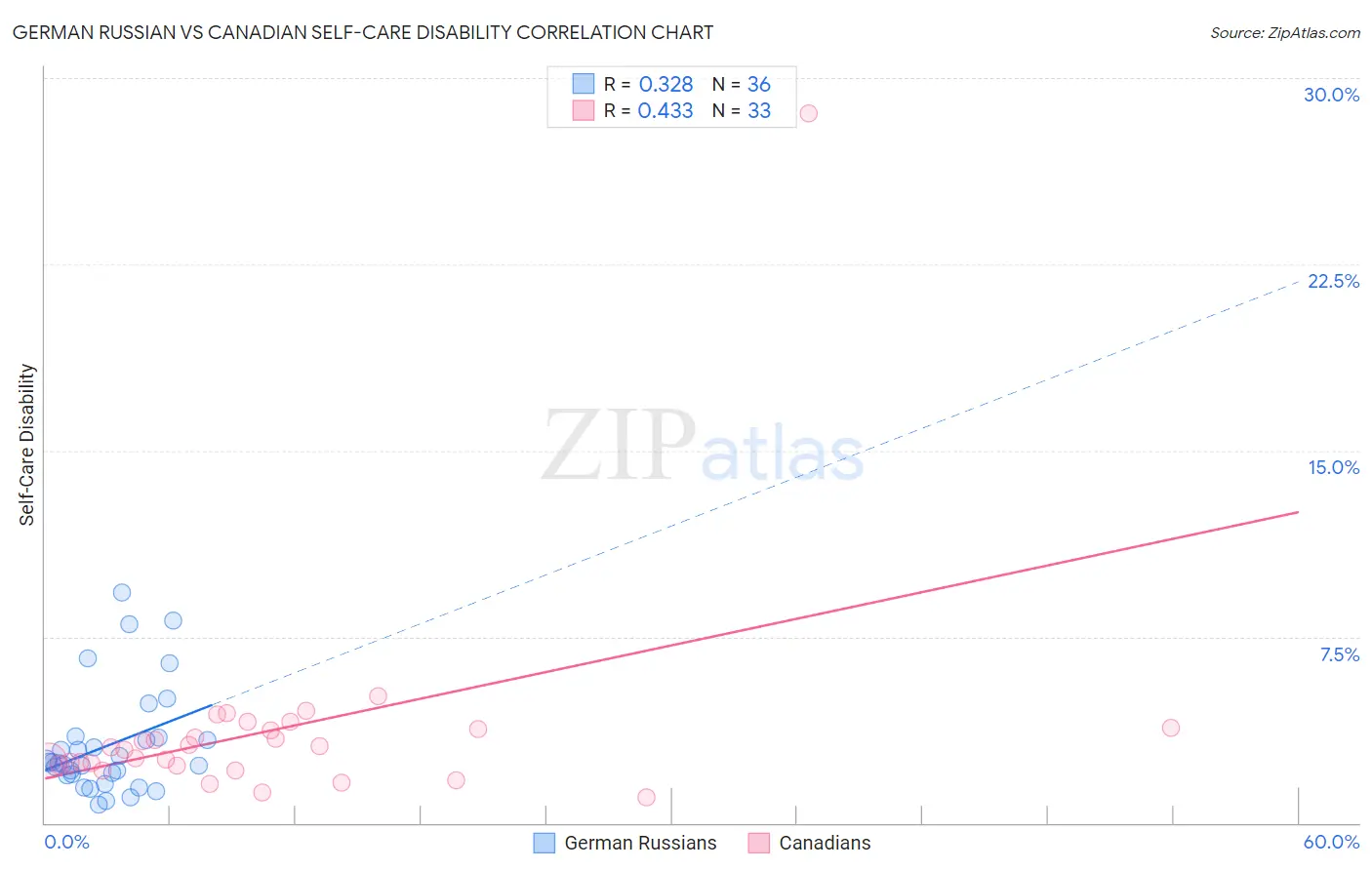German Russian vs Canadian Self-Care Disability
COMPARE
German Russian
Canadian
Self-Care Disability
Self-Care Disability Comparison
German Russians
Canadians
2.5%
SELF-CARE DISABILITY
62.7/ 100
METRIC RATING
163rd/ 347
METRIC RANK
2.5%
SELF-CARE DISABILITY
58.8/ 100
METRIC RATING
166th/ 347
METRIC RANK
German Russian vs Canadian Self-Care Disability Correlation Chart
The statistical analysis conducted on geographies consisting of 96,413,483 people shows a mild positive correlation between the proportion of German Russians and percentage of population with self-care disability in the United States with a correlation coefficient (R) of 0.328 and weighted average of 2.5%. Similarly, the statistical analysis conducted on geographies consisting of 436,894,568 people shows a moderate positive correlation between the proportion of Canadians and percentage of population with self-care disability in the United States with a correlation coefficient (R) of 0.433 and weighted average of 2.5%, a difference of 0.20%.

Self-Care Disability Correlation Summary
| Measurement | German Russian | Canadian |
| Minimum | 0.71% | 1.1% |
| Maximum | 9.3% | 28.6% |
| Range | 8.5% | 27.5% |
| Mean | 3.1% | 3.7% |
| Median | 2.4% | 3.0% |
| Interquartile 25% (IQ1) | 1.9% | 2.3% |
| Interquartile 75% (IQ3) | 3.4% | 3.8% |
| Interquartile Range (IQR) | 1.5% | 1.5% |
| Standard Deviation (Sample) | 2.1% | 4.6% |
| Standard Deviation (Population) | 2.1% | 4.5% |
Demographics Similar to German Russians and Canadians by Self-Care Disability
In terms of self-care disability, the demographic groups most similar to German Russians are Somali (2.5%, a difference of 0.050%), Immigrants from Vietnam (2.5%, a difference of 0.17%), Syrian (2.5%, a difference of 0.19%), Lebanese (2.4%, a difference of 0.20%), and Finnish (2.4%, a difference of 0.23%). Similarly, the demographic groups most similar to Canadians are Syrian (2.5%, a difference of 0.010%), Immigrants from Vietnam (2.5%, a difference of 0.030%), Immigrants from Greece (2.5%, a difference of 0.070%), Ute (2.5%, a difference of 0.080%), and Immigrants from Somalia (2.5%, a difference of 0.14%).
| Demographics | Rating | Rank | Self-Care Disability |
| Italians | 72.2 /100 | #154 | Good 2.4% |
| Pakistanis | 71.4 /100 | #155 | Good 2.4% |
| Nigerians | 70.6 /100 | #156 | Good 2.4% |
| Immigrants | Europe | 69.6 /100 | #157 | Good 2.4% |
| Immigrants | Western Europe | 68.6 /100 | #158 | Good 2.4% |
| Immigrants | Italy | 68.5 /100 | #159 | Good 2.4% |
| Finns | 67.0 /100 | #160 | Good 2.4% |
| Lebanese | 66.5 /100 | #161 | Good 2.4% |
| Somalis | 63.7 /100 | #162 | Good 2.5% |
| German Russians | 62.7 /100 | #163 | Good 2.5% |
| Immigrants | Vietnam | 59.3 /100 | #164 | Average 2.5% |
| Syrians | 59.0 /100 | #165 | Average 2.5% |
| Canadians | 58.8 /100 | #166 | Average 2.5% |
| Immigrants | Greece | 57.3 /100 | #167 | Average 2.5% |
| Ute | 57.1 /100 | #168 | Average 2.5% |
| Immigrants | Somalia | 55.9 /100 | #169 | Average 2.5% |
| Scottish | 54.3 /100 | #170 | Average 2.5% |
| Pennsylvania Germans | 53.5 /100 | #171 | Average 2.5% |
| Czechoslovakians | 53.5 /100 | #172 | Average 2.5% |
| Immigrants | Burma/Myanmar | 52.8 /100 | #173 | Average 2.5% |
| Welsh | 50.0 /100 | #174 | Average 2.5% |